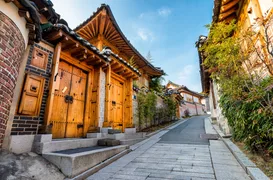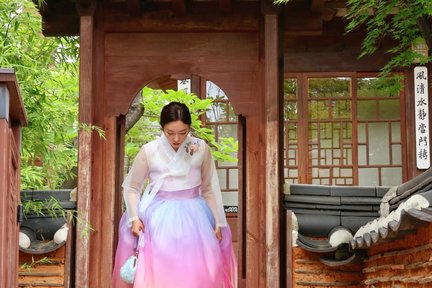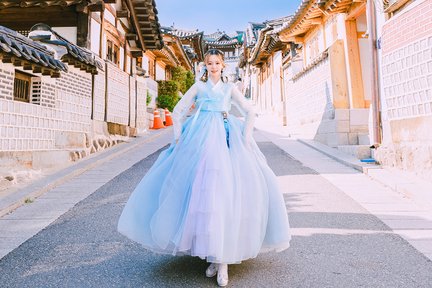Bukchon Hanok Village

The best of Bukchon Hanok Village
Bucket-list experiences
Make it a getaway
Events with a lot of buzz
Trouble-free transport
All that's good & tasty
More to explore
Why people love Bukchon Hanok Village
Nearby places to go
FAQs about Bukchon Hanok Village
Why is Bukchon Hanok Village famous?
Is it worth going to Bukchon Hanok Village?
How long does it take to walk Bukchon Hanok Village?
Does anyone live in Bukchon Hanok Village?
What to know before visiting Bukchon Hanok Village
What to know before visiting Bukchon Hanok Village
Must-Visit Attractions in Bukchon Hanok Village
1. Gyeongbokgung Palace
Just north of Gwanghwamun Square, Gyeongbokgung Palace is a must-see attraction in Seoul. As the largest of the Five Palaces from the Joseon Dynasty, Gyeongbokgung, or Gyeongbok Palace, has a rich history within its palace grounds. In here, you can wear hanboks or Korean traditional clothes, and visit the National Folk Museum of Korea and the National Palace Museum of Korea. This palace is celebrated for its historic structures, scenic gardens, and the popular royal guard-changing ceremony held twice daily.
2. Changdeokgung Palace
Changdeokgung Palace became the primary palace for 250 years after being rebuilt following the destruction of both Gyeongbokgung and Changdeokgung during the late 16th-century Japanese invasion. Its "Secret Garden," located behind the inner hall, was established by King Taejong, which offered a peaceful retreat for the royal family. The garden was kept natural and only tended to when necessary.
3. Jongmyo Shrine
Visit Jongmyo Shrine to explore Korea's cultural and historical heritage. Established in 1395, this UNESCO World Heritage Site is a must-see for Korean history enthusiasts. In this shrine, you can find the spirit tablets of past Joseon Dynasty kings and queens honored, symbolizing the royal family's legitimacy. The king would often visit for ancestral rites to pray for the people's safety.
4. Changdeokgung 1-gil
Located off Gyedong-gil, you'll find Changdeokgung 1-gil, the road that guides you to Changdeokgung Palace. Along the path, you'll encounter HAMU, a store full of captivating blends of contemporary and ancient aesthetics. Owned by costume designer Lee Jin-hee, HAMU beautifully showcases the fusion of traditional Korean culture with modern flair.
5. Bukchon-ro 11-gil
Bukchon-ro has some of the village's most famous streets. You'll find charming galleries like Gallery Sai, offering traditional tea houses. Explore small alleys, though photography is not allowed, where you can customize your unique perfume for different moods like calming, invigorating, awake, or centered.
Tips for your Bukchon Hanok Village visit
When is the best time to visit Bukchon Hanok Village?
Bukchon Hanok Village is open year-round, but the best times to visit are during spring (April to June) and autumn (September to November) for mild weather and beautiful scenery. Most shops and attractions in Bukchon Hanok Village open around 10 AM and close by 5 PM. Plan your visit during weekdays to avoid crowds, and respect the privacy of local residents by keeping noise levels low and following local etiquette.
How to go to Bukchon Hanok Village?
You can ride public transportation or ride taxis and private cars to go to Bukchon Hanok Village. If you ride the train, just take Seoul Subway Line 3 in Seoul station and drop off at Anguk station, which is an easy walk and a few meters away from the Bukchon Hanok Village.




